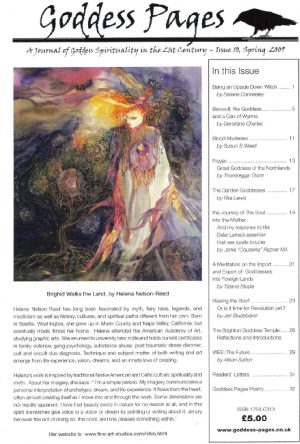 Being An Upside Down Witch
Being An Upside Down Witch
Written for Goddess Pages – British spiritual magazine
Living in Australia – or anywhere in the southern hemisphere for that matter – can be a little confusing for a witch. All the books about magic print elemental correspondences that are back to front (the fire of the sun is certainly not in the south down here!), and list dates for the sabbats that bear no relation to the actual cycle of our seasons. I’ve met a surprising number of people from the US and UK who didn’t realise that our seasons are six months behind (or ahead, depending on how you look at it) the northern ones. Our Midsummer falls around December 20-23, when the north is blanketed in snow, while our winter solstice falls around June 20-23, the height of summer up there.
Perhaps long ago we may have followed the oft-printed dates and celebrated these rituals along with our northern friends, linking up psychically in December to celebrate Yule and welcome the birth of the sun god, even as here he was about to start fading as summer reached its peak, or doing autumn rituals of harvest and release while our land was quickening with the new growth of spring.
But I don’t know of a single southern witch who follows the northern model. At coven rituals, open celebrations and alone at home, groups and solitary practitioners follow our own seasonal cycle, because paganism and goddess worship are intimately attuned to the heartbeat of the planet and the seasons, and these festivals are prescribed by the movement of the earth in relation to the sun, not a fixed date on a modern calendar. The land, as the embodiment of the goddess, speaks to all of us, and the goddess path is about learning to hear this language of nature, to sense the movement and emotional shifts as the earth moves through its cycles, and feel the rhythm of its turning. And so a spring fertility festival will be marked in spring, when the planet is alive with new life and energy, regardless of what is happening on that day in the other hemisphere.
There has been mention in these pages that it is wrong to import “northern” festivals to the southern lands. But celebrating the beauty and bounty of nature and the dance of the seasons is not anyone’s exclusive right. Maybe people in the Celtic lands can feel historically possessive of the names themselves (Lughnasadh, Beltane), but they have no ownership of the winter solstice or the first day of spring, and this is what these festivals are.
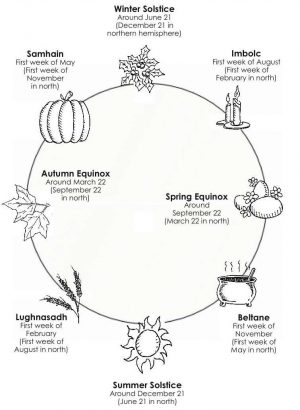 The Wheel of the Year reflects the constant universal cycle of life, death and rebirth. Mythologically it is tied to the story of the god and goddess as she shifts from young lover to mother to crone, and he is born, grows in power, sacrifices himself then is reborn, but literally it refers to the changing seasons – the fertility and vibrant life force of summer, the balance and harvest of autumn, the introspection and endings (death) of winter, and the rebirth of spring. Being in the southern hemisphere doesn’t necessarily change this seasonal pattern, it merely shifts the dates. There are parts of Australia such as the Red Centre – and parts of the northern hemisphere too – where the seasons don’t play out in a standard, balanced rhythm through summer, autumn, winter and spring. Some places experience just two main seasons, wet and dry, yet even there the people living in harmony with the land are able to feel the earth as it surges with new life, grows, becomes ready for harvest then withdraws its energy within the earth again, and celebrate their own personal Wheel that reflects their reality.
The Wheel of the Year reflects the constant universal cycle of life, death and rebirth. Mythologically it is tied to the story of the god and goddess as she shifts from young lover to mother to crone, and he is born, grows in power, sacrifices himself then is reborn, but literally it refers to the changing seasons – the fertility and vibrant life force of summer, the balance and harvest of autumn, the introspection and endings (death) of winter, and the rebirth of spring. Being in the southern hemisphere doesn’t necessarily change this seasonal pattern, it merely shifts the dates. There are parts of Australia such as the Red Centre – and parts of the northern hemisphere too – where the seasons don’t play out in a standard, balanced rhythm through summer, autumn, winter and spring. Some places experience just two main seasons, wet and dry, yet even there the people living in harmony with the land are able to feel the earth as it surges with new life, grows, becomes ready for harvest then withdraws its energy within the earth again, and celebrate their own personal Wheel that reflects their reality.
But in much of the coastal region of the country, where around eighty per cent of the population is based, the seasons do follow a regular pattern, and many witches celebrate the traditional Wheel of the Year, moved forward six months to reflect their personal experience. Of course it can seem a little strange and out of whack sometimes, because the Christians hijacked so many of the magical sabbats and they have become such a part of western life. So how and when do we celebrate the turning points of the witches’ year Down Under, and how do we deal with the inconsistencies of modern festivities?
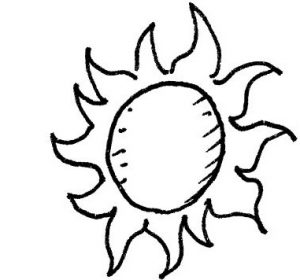 The Summer Solstice
The Summer Solstice
As the western world gears up for Christmas and northern witches mark Yule, in the southern hemisphere we are celebrating the summer solstice. In 2008 this fell on December 21, and in 2009 it will fall on December 22. This is Midsummer Day, when the sun reaches its southernmost latitude before it turns and heads back towards the north. In some ways it would be easier to celebrate Yule during this festive season, as our northern hemisphere counterparts do, when everyone is feasting, exchanging gifts and acknowledging the birth of the son of God – or the sun god. But Down Under this is the longest, not shortest, day of the year. The sun is strong (some would say merciless), and the energy is fast and active. It’s a time of abundance, achievement and culmination. Despite the snow-covered decorations, men sweating in Santa suits and hot roast dinners – a legacy of our ancestors – on this day we absorb the solar energy, feast on luscious summer fruits, give thanks for the goals we’ve reached and revel in the strength and heat of the long day of sunshine and the power of the sun god.
Sometimes I go to the beach at dawn and watch the sun rise over the ocean, or climb the hill in the park near my house at sunset, farewelling it as it begins its journey back to northern parts, and its energy starts to wane from this day forward as it begins its descent into the dark half of the year. Sometimes I do a formal ritual with a group, or have a feast of celebration with my magical friends, wrapping pots of sunshiney flowers and summer herbs in gold and red velvet as gifts, and breathe in the scent of orange blossoms, lavender and rosemary. I celebrate Christmas with my family too, but I see no conflict here, as the modern version has little to do with the real Yule in intent or meaning, and I’m quite happy to honour the power of the summer solstice and then a few days later enjoy the spirit of giving of the festive season.
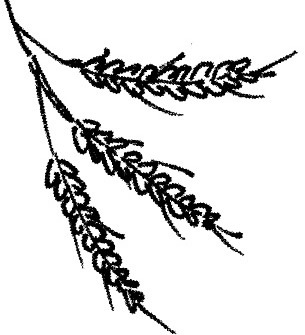 Lughnasadh
Lughnasadh
In the first week of February we celebrate Lughnasadh, the cross-quarter day that marks the end of summer and the first day of autumn, although where I live it will still be hot and fiery for some time to come. In the north it’s Imbolc, linked to fertility, love and Valentine’s Day, but down here it’s the opposite. The earth is still throbbing with life and energy, but it’s mature, fully ripened and almost over-abundant. This is the first harvest festival, and fruit picking becomes a popular form of employment for many travellers, with farms all over the country taking on seasonal workers. The grape harvest begins, to make the wine that is now internationally renowned, and an abundance of other delicious fruits and vegetables, as well as golden wheat and other cereal crops, are also picked at this time.
As well as a time of feasting and of thanksgiving for the life-giving properties of our crops, and recognition of the cycle of sowing and reaping, Lughnasadh is also about the symbolic things we grow and create in our life. It’s a day of harvesting the fruits of our labours and acknowledging our successes and what we’ve achieved in the past year. A month after New Year’s resolutions are made, it seems a good time to take stock. On this day I perform a ritual to celebrate and acknowledge the goals I’ve reached, making a list of all the things I’ve gained – the gifts I’ve been given, the new talents I’ve developed, the friends I’ve made, the experiences I’ve had, the healings I’ve received, the opportunities I’ve pursued – and giving thanks for it all. We may no longer be so connected to the creation and production of our food, as in days gone by, or believe that our prayers or sacrifices influence the success of the crops, but being grateful for what we have and giving thanks is still a beautiful way to live. I also try to pass on some of my good fortune so the energy of abundance continues and is strengthened, by giving time or money to a charity of some kind.
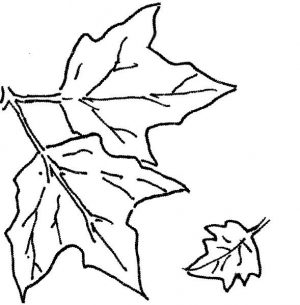 Autumn Equinox
Autumn Equinox
Late March is another strange time for Down Under witches, because the stores are filled with chocolate bunnies and eggs in preparation for Easter, the Christian holiday based on the spring festival of Ostara, which northern hemisphere witches are marking now. While most of the world – both pagan and non-magical – celebrates rebirth, resurrection and new life with the fertility goddess Ostara’s symbols of eggs and hares, in Australia it’s the middle of autumn, a time of crisp, chilly mornings, pale blue skies and a world aflame with colour as the trees turn a hundred shades of red-orange-yellow-brown. Daylight savings ends, and from the autumn equinox onwards, which this year falls on March 20, the days start getting shorter and the weather cooler, but this day of equal light and dark is the moment of balance in nature and within – a time of harmony, joy and gentle calm. While I certainly eat my share of chocolate eggs at this time, acknowledging on some level the energy of Ostara, I also prepare a harvest feast of richly coloured fruits and root vegetables, golden grains and heavy warm breads, and start drying my herbs. I feel immense joy as I skip through the crackling autumn leaves and chart the turning of the seasons by the patterns of leaves on the trees. I give thanks for my metaphorical harvest, honouring my achievements, experiences and wisdom in a way that feels right to me, be it with a big celebration or a personal ritual of gratitude. It’s a time of balance – my world is poised between summer and winter, and day and night are in harmony, which is reflected in the earth’s energy and within me.
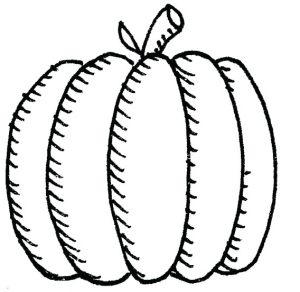 Samhain
Samhain
In the first week of May we celebrate the cross-quarter day that marks the end of autumn and the beginning of the coldness and dark of winter. In the north it’s all hot, fertile love energy, with abundant blossoms, the hatching of birds, bees pollinating flowers and lovers leaping the Beltane fires. But in the southern hemisphere at this time it’s the opposite. It’s the start of winter, a season of introspection and darkness both metaphorically and literally. Traditionally this was the time to store food for the cold barren months ahead; symbolically it’s about rest and renewal, of preparing for what’s ahead and withdrawing a little to conserve your energy. While the grass becomes green and lush at this time with the onset of rain, many of the trees are stripped bare, and bitterly cold winds add to the starkness of the season. This is the time we start readying ourselves for the rebirth we’ll experience at Yule, a time of inner reflection and contemplation, of studying the Mysteries (of our tradition or our life), and scrying for answers and illumination. It’s also the night when the veil between the worlds is at its thinnest, and we honour our ancestors and commune with the dead. Of course southern witches do find it hard to explain to people that we are celebrating “Halloween” at this time, but if you pay attention to the earth, to nature, to the seasons, it’s very clear that this is our Samhain.
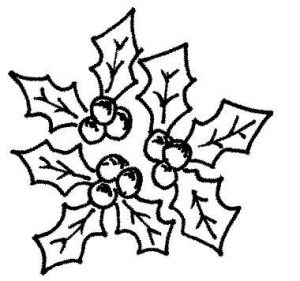 The Winter Solstice
The Winter Solstice
In late June we celebrate the winter solstice; this year it will fall on the 21st. This is our midwinter – the longest night and shortest day of the year, when the sun is as far north as it will get, making it midsummer in the northern hemisphere. Snow falls in some parts of Australia, and in others it’s cold and rainy. Even in the Red Centre, where winter is their dry season, nature is introspective at this time – the seeds are all closed up, waiting for the heat and rainfall of summer to explode into life. Winter, and this midpoint in particular, is a time to rest and reflect, to acknowledge sadness and loss – of dreams, of friendships, of parts of your self – and conserve your energy and life force.
Yet it’s a day of hope too, for the solstice is the turning point in this time of darkness, introspection and dreaming. Considered the dark night of the soul that gives birth to the creative spark, it marks the period when the dark half of the year relinquishes its hold to the light half. From this day forward the days slowly start to lengthen, the sun becomes stronger and the energy within and without increases and builds. On Midwinter’s Night Eve I light a candle to symbolise the sun and its activating energy, and list my dreams for the coming year. Sometimes I stay up all night to await the return of the light, other years I get up for the sunrise and toast the dawn and give thanks for this energetic reawakening. As the sun is reborn I open myself up to the promise of new growth and achievement, the energy of renewal and the rebirth of my own self and creativity.
I’m more inclined to refer to this festival as Winter Solstice rather than Yule, because the latter has connotations of Christmas, which is still six months away for us, yet many southern witches retain the traditional name, particularly in colder areas where open fires and Yule logs are more typical. Interestingly, there is now increasing recognition in Australia that Christmas is based on a winter tradition that involves magic, and many mainstream events are planned to coincide with our winter solstice. The Pagan Awareness Network holds Hollyfrost, an annual Midwinter retreat and ritual, and in the Blue Mountains the Winter Magic Festival is held on the day of the solstice and is open to everyone, regardless of beliefs. And the more touristy than magical Yulefest and Christmas in July are also celebrated around this time, in recognition that here Yule should not take place in December, in the heat of the Australian summer, but in the cool of winter.
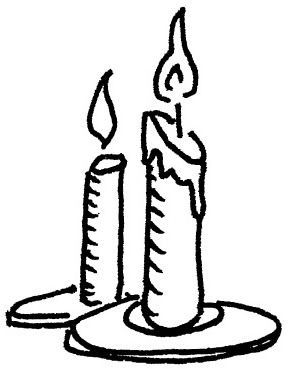 Imbolc
Imbolc
In the first week of August, we in the southern hemisphere honour the cross-quarter day that marks the end of winter and the first day of spring. The earth starts to shake off the severity of the cold period and emerge back into the light. Some of our stunning wildflowers, like the delicate golden wattle, explode into glorious bloom, and it’s a time of hope, renewal and fresh starts after winter’s sluggishness. The sun starts to strengthen and the days grow longer, symbolising the return and renewal of the life force of the land and its people. Energetically it’s a time of awakening and new energy, and is the day we sow the seeds of what we want to achieve in the coming year. It’s also a time of purification and cleansing after the long dark of winter, when I feel motivated to physically clean my house and energetically clear my space, sweeping out old energy and thoughts so the new can thrive. Imbolc represents new beginnings, initiations and inspiration, and the budding plants, swooping baby birds and buzzing bees always fill me with vitality, passion and the impetus to start (or rededicate myself to) new projects.
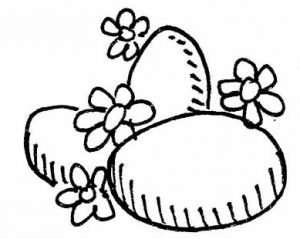 The Spring Equinox
The Spring Equinox
In the southern hemisphere, the spring or vernal equinox falls in late September – this year it’s on the 23rd. It’s a beautiful time of year, with bright blue skies and pale sunshine without the merciless heat of summer… perfect temperate weather. It’s one of only two times of the year when the length of day and night is equal, and on a personal level it’s a time of balance and harmony too, of union between the physical and spiritual as the balance of universal energies is reflected within. It’s also a time of growth and fertility, when crops are sown, the buds on the trees open, birds build nests and lay eggs and new life is celebrated. Energetically it’s also a very fertile time, as the seeds we sowed of our goals begin to sprout and gain momentum. Traditionally the spring equinox is tied up with rabbits, eggs and fertility goddesses, so it does feel a bit strange to be celebrating “Easter” at this time, but the beautifully blossoming and budding earth and the wild energy and vitality make it obvious that it’s the time for it. It’s a celebration of new life, hope, passion, growth and energy, the time of year that I meditate on my metaphorical fertility and my ability to manifest dreams into reality. In many ancient cultures, including the Romans whose calendar ours is based on, the spring equinox was the first day of the year, and the sense of new hope and optimism inherent in this day remains. It hasn’t always fallen around March/September 21 – our dating is a modern invention – and there are still countries where this is the first day of the year. The Ancient Roman year began on the spring equinox, the day they called Martius 1, which is March 21 in Gregorian terms. In the modern Iranian calendar, used in Iran and Afghanistan, each new year begins on the spring equinox as precisely determined by astronomical observations from Tehran and Kabul (making it the perfect solar calendar, because each calendar year corresponds exactly to the solar year, with no leap days necessary). The Baha’i calendar also begins on the spring equinox.
I got married on September 22 – our spring equinox – a few years ago, so we celebrate our anniversary on Ostara each year. Yet we ran away and wed in the northern hemisphere, which means where we were that day was actually the autumn equinox. Thus each year as we celebrate our anniversary at home, in the springtime, we also acknowledge the energy of autumn. I add a few autumn colours to my spring bouquet, and consider not only what seeds we want to plant for the next year of our relationship, but what we have harvested over the previous one. As Mabon and Ostara are the two days of the year when all is balanced, within and without, they are both good days to renew commitments or pledge a new one, be it a vow of love, magic, career or anything else. I feel like I incorporated the best of both worlds by making my wedding day span both festivals.
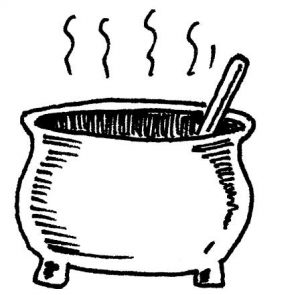 Beltane
Beltane
In the southern hemisphere, the first week of November brings the cross-quarter day that marks the end of spring and the start of the heat and energy of summer, and the festival of love. It’s a time of lovers and spells to attract love, and celebrating the fertility of life, not just physically, but also of our dreams and ambitions. Symbolically this day marks the igniting of the fires of creativity and passion, of the fertility of our desires being made manifest, as the universe bursts with a raw energy and power that we can tap in to simply by breathing it in.
In the northern hemisphere Beltane falls around May Day, and while it has no relevance to us in terms of timing, I have been part of a coven ritual that involved a maypole dance, to represent the union of god and goddess at this point in the Wheel of the Seasonal Year. I’ve also leapt over the Beltane fires, although that was before I met my husband, when I jumped over it with friends as part of a personal ritual of purification and preparation, leaping out of my past, burning away the relationship issues that had kept my heart closed, and towards a future where love was possible (I met my partner two months later).
While I’ve been known to dress up as a vampire or a fairy and go to a Halloween party on October 31, privately or with coven members or witchie friends I’m celebrating the new blossoms and the vitality and fertility of Beltane at this time.
So, while it’s perhaps a little easier for northern hemisphere goddess worshippers to celebrate the cycle of the seasons, given that so many of them are actually woven into “normal” life, when you tune in to the earth and the rhythms of nature it is easy to know when it’s the right time to celebrate any of the old festivals. Because whether you live in the north, where they began, or the south, adding your own personal meaning to the traditional forms of celebration, the sabbats are still relevant to our lives. Even today, when we no longer live in harmony with the earth’s rhythms or agricultural cycles, modern pagans celebrate the Wheel of the Year as an honouring of nature and an acknowledgement of the continuing cycle of life, death and rebirth, both literally and symbolically. Becoming aware of the seasonal shifts and the patterns of nature wherever you live, and celebrating these ancient but still relevant festivals, is a simple way to tap in to the magic of the universe and harness it for your own growth. We may no longer grow our own grain or purify the fields with fire, but these celebrations still have power, particularly in the symbolic form – planting the seeds of our dreams in the metaphorical spring, watching them grow and manifest in the world before we give thanks for our literal harvest, then allowing the things that no longer serve us to die off or be released in our own personal winter, then starting all over again with new dreams as we celebrate our own rebirth.
I’ve spent a few sabbats in the northern hemisphere, leaping the Beltane fires in Glastonbury’s Chalice Well Gardens, sitting inside the Great Pyramid on the morning of the summer solstice, watching the sun set over the Hill of Tara at Lughnasadh, and the energy of each season is intense, real and tangible no matter which hemisphere I am in. Whenever I celebrate these magical turning points of our planet I feel so strongly a part of the earth, at one with nature and the universe. And so, regardless of which half of the world I’m in, I always acknowledge the opposite festival as well, in some small way. Perhaps this isn’t as important for those in the north, but for me it seems right to acknowledge the turning seasons all over the world, the beautiful, gracefully balanced dance of light and dark, heat and cold, day and night, that makes up this world that we are all a part of.
We are all connected to the earth, no matter where we live, and we need to learn how to (and accept that we can) follow the seasons of nature in our own unique way, based on the rising and setting of the sun in our own home town, the cycles of the moon as it crosses our part of the sky, and the very personal language of nature that is so different – and yet so similar –according to our own unique landscape.
Serene Conneeley is a healer, writer and witch who lives in Sydney, Australia. She is a reconnective healing practitioner and has studied magical and medicinal herbalism, reiki and many other healing modalities, as well as politics and journalism. Her first book, Seven Sacred Sites: Magical Journeys That Will Change Your Life, has just been published. Visit Goddess Pages magazine here.
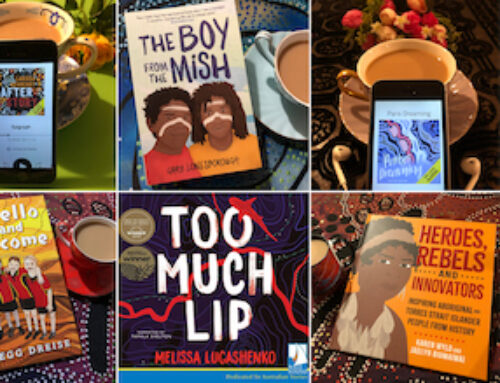
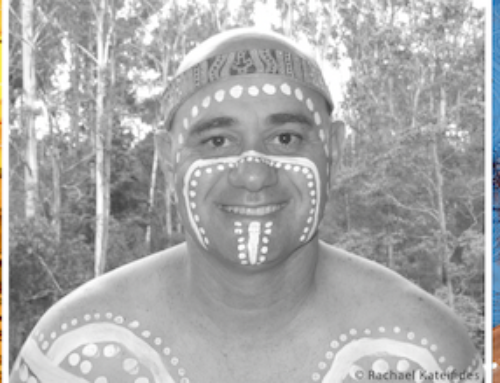
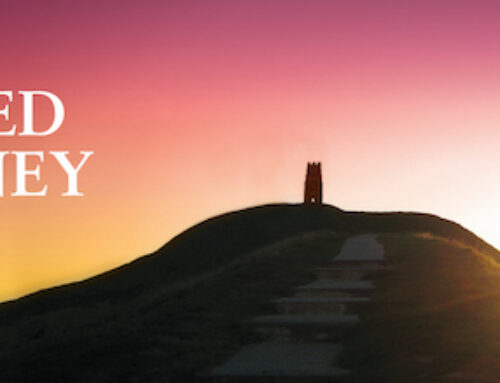
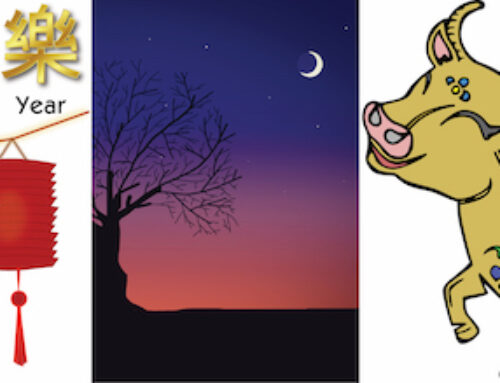


Get Social